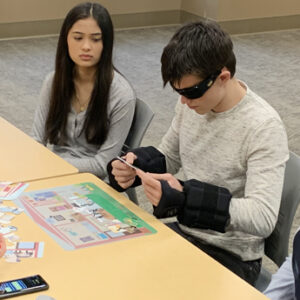Make sure your lessons stick with students by using these helpful tips.
 Today, more young people are being exposed to opioids than ever before, making education about opioid abuse more vital than ever.
Today, more young people are being exposed to opioids than ever before, making education about opioid abuse more vital than ever.
According to one study, an estimated 27% of adolescents (ages 12-17) and young adults (ages 18-25) reported using prescription opioids in the past year. With that in mind, here are some opioid abuse prevention tips to incorporate into your education program.
- Illustrate the dangers of opioid misuse
- Get the parents involved
- Share how to get help
Illustrate the dangers of opioid misuse
There is a general misunderstanding that because opioid use is, in some cases, safe and legal, it’s not as dangerous as “harder” or illegal drugs. But the truth is, it can sometimes be a slippery slope toward addiction once a person starts taking opioids, even under the careful supervision of a doctor.
Short-term effects of opioid use include drowsiness, nausea, and hypoxia — a condition that inhibits the flow of oxygen to the brain, which, over time, can cause severe neurological damage. Long-term opioid misuse can also lead to physical dependence and addiction. Since opioids impact how our brains and nervous systems function, there’s no way to judge how your body will react before taking them.
Sharing information about these risks with your students is a crucial way to help them understand how severe opioid abuse can be. For more opioid abuse statistics that you can share with your high school students, check out this previous Fatal Vision blog post.
One way to safely illustrate how opioid misuse can impact our bodies is with the help of the Fatal Vision® Opioid Goggles and Program Kit. Together with the activities in the kit, the goggles help students experience the simulated effects of divided attention failure, nodding out, contrast sensitivity impairment, heaviness, and lethargy that are commonly associated with opioid misuse.
Get the parents involved
Opioid misuse prevention starts at home, and getting parents and caregivers involved is critical. Communicate openly with parents of students in your program and encourage your students to do the same.
If parents have any opioids in the house for their own use, they should be kept away from anyone not authorized to use them. Parents should also know the warning signs of opioid addiction, including changes in behavior, extreme mood swings marked by shifts from depression to hostility, and anger, confusion, and drowsiness. Of course, some mood swings can be a side effect of just being a teenager, but parents typically know their kids best — encourage them to say something and seek help if they or others close to their child notice severe changes in behavior.
Share how to get help
Of course, the best opioid abuse prevention tip to share with your students is never to take them outside of the instructions given by a medical provider. It’s important to stress that if they suspect they or someone they know is misusing opioids or developing an addiction, there are several ways to get help.
The first step toward recovery is acknowledging the problem and committing to getting help. If possible, encourage your students to engage with an adult they trust to help them come up with a plan. You may also want to provide the Substance Abuse and Mental Health Services Administration (SAMHSA) website as a resource for treatment options; SAMHSA can also assist with treatment referrals.
To learn more about Fatal Vision’s educational products and how you can use them to enrich how you teach opioid abuse prevention tips to your high school students, visit our online store or contact our team today!




 Today, more young people are being exposed to opioids than ever before, making education about opioid abuse more vital than ever.
Today, more young people are being exposed to opioids than ever before, making education about opioid abuse more vital than ever.